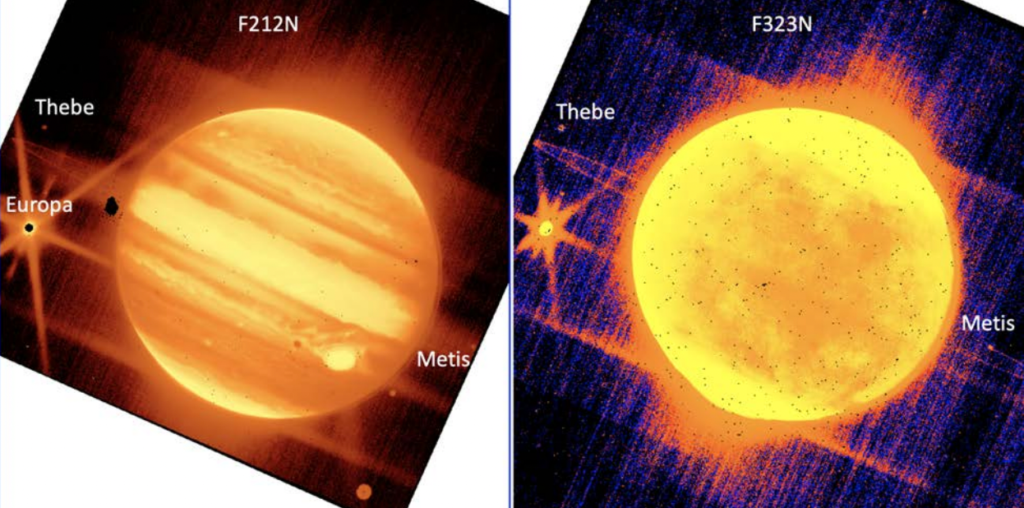On July 12, NASA published the long-awaited first images of the James Webb Telescope (JWST). They show distant galaxies, nebulae and regions of active star formation. But, as it turned out, JWST has already managed to photograph an object that is much closer to Earth — Jupiter.
Images of Jupiter are contained in a report published by NASA on the technical condition of the telescope and its first scientific results. According to the document, the photos were taken as part of the testing and calibration operations of JWST scientific instruments. Mission specialists wanted to make sure that the telescope would be able to track a moving target under conditions of exposure to its optics of scattered light. This is especially important for observing objects such as rings of planets and their moons.

In total, JWST received two portraits of Jupiter in the near infrared range. They were made by a NIRCam camera using filters at a wavelength of 2.12 microns and 3.23 microns. The exposure time was 75 seconds.
The images taken by JWST show characteristic bands in the atmosphere of Jupiter and the famous Great Red Spot — a huge vortex the size of the Earth. The images also included the moons Europa, Thebe and Metis. The dark spot that can be seen in one of the images is the shadow cast by Europa on Jupiter.
It is worth noting that these are only test shots. In the future, JWST will make much more detailed portraits of Jupiter and other objects of the Solar System.
According to https://www.sciencealert.com
Follow us on Twitter to get the most interesting space news in time
https://twitter.com/ust_magazine
